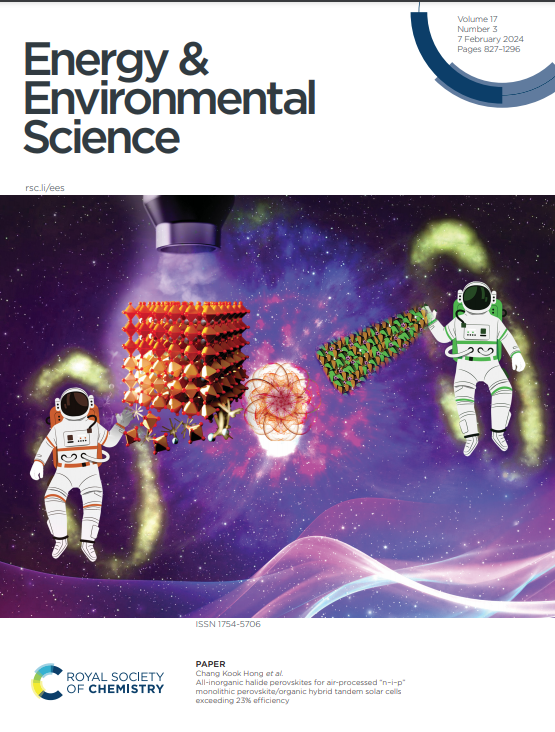Blade Printing of Low-Melting-Point-Alloys as Back Electrodes for High-Efficiency and Stable Inverted Perovskite Solar Cells
IF 32.4
1区 材料科学
Q1 CHEMISTRY, MULTIDISCIPLINARY
引用次数: 0
Abstract
Printing of electrodes to replace thermal evaporation of metals for back contacts in perovskite solar cells (PSCs) is essential for scalable manufacturing. However, PSCs incorporating printed electrodes typically exhibit lower power conversion efficiencies (PCE) than those with evaporated metals. Low-melting-point alloys (LMPAs) are promising candidates for PSC electrodes due to their matched work functions, high electrical conductivities, and chemical stability. This study proposes a convenient strategy of blade printing to pattern In-Sn-Bi LMPAs as back electrodes in inverted PSCs. These LMPAs, with moderate melting points (62°C, 80°C, and 120°C), are printed above their melting points and solidify at room temperature without additional post-treatment. PSCs with LMPA electrodes show high built-in potential and fast charge extraction, achieving PCEs of 22.48%, comparable to evaporated-metal counterparts. Charge transport and recombination dynamics reveal that PSCs with LMPA electrodes are more stable than those with evaporated copper electrodes after aging in air without encapsulation. Morphological analysis of LMPA and perovskite layers after aging shows no noticeable corrosion. PSCs with blade-printed LMPA electrodes retain ~80% of their peak PCE after 1,500 hours of aging, demonstrating significantly higher stability than PSCs with evaporated copper or silver electrodes.求助全文
约1分钟内获得全文
求助全文
来源期刊

Energy & Environmental Science
化学-工程:化工
CiteScore
50.50
自引率
2.20%
发文量
349
审稿时长
2.2 months
期刊介绍:
Energy & Environmental Science, a peer-reviewed scientific journal, publishes original research and review articles covering interdisciplinary topics in the (bio)chemical and (bio)physical sciences, as well as chemical engineering disciplines. Published monthly by the Royal Society of Chemistry (RSC), a not-for-profit publisher, Energy & Environmental Science is recognized as a leading journal. It boasts an impressive impact factor of 8.500 as of 2009, ranking 8th among 140 journals in the category "Chemistry, Multidisciplinary," second among 71 journals in "Energy & Fuels," second among 128 journals in "Engineering, Chemical," and first among 181 scientific journals in "Environmental Sciences."
Energy & Environmental Science publishes various types of articles, including Research Papers (original scientific work), Review Articles, Perspectives, and Minireviews (feature review-type articles of broad interest), Communications (original scientific work of an urgent nature), Opinions (personal, often speculative viewpoints or hypotheses on current topics), and Analysis Articles (in-depth examination of energy-related issues).
 求助内容:
求助内容: 应助结果提醒方式:
应助结果提醒方式:


